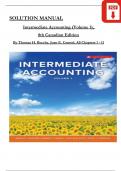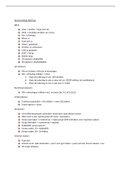Exam (elaborations)
Solution Manual for Intermediate Accounting (Volume 1), 8th Edition Beechy/Conrod, Complete Chapters 1 to 11, Verified Latest Version
- Course
- Institution
Solution Manual for Intermediate Accounting (Volume 1), 8th Edition Beechy/Conrod, Complete Chapters 1 to 11, Verified Latest Version Beechy/Conrod, Intermediate Accounting (Volume 1), 8th Edition Solution Manual, Complete Chapters 1 - 11, Verified Latest Version Beechy/Conrod, Intermediate Accoun...
[Show more]




